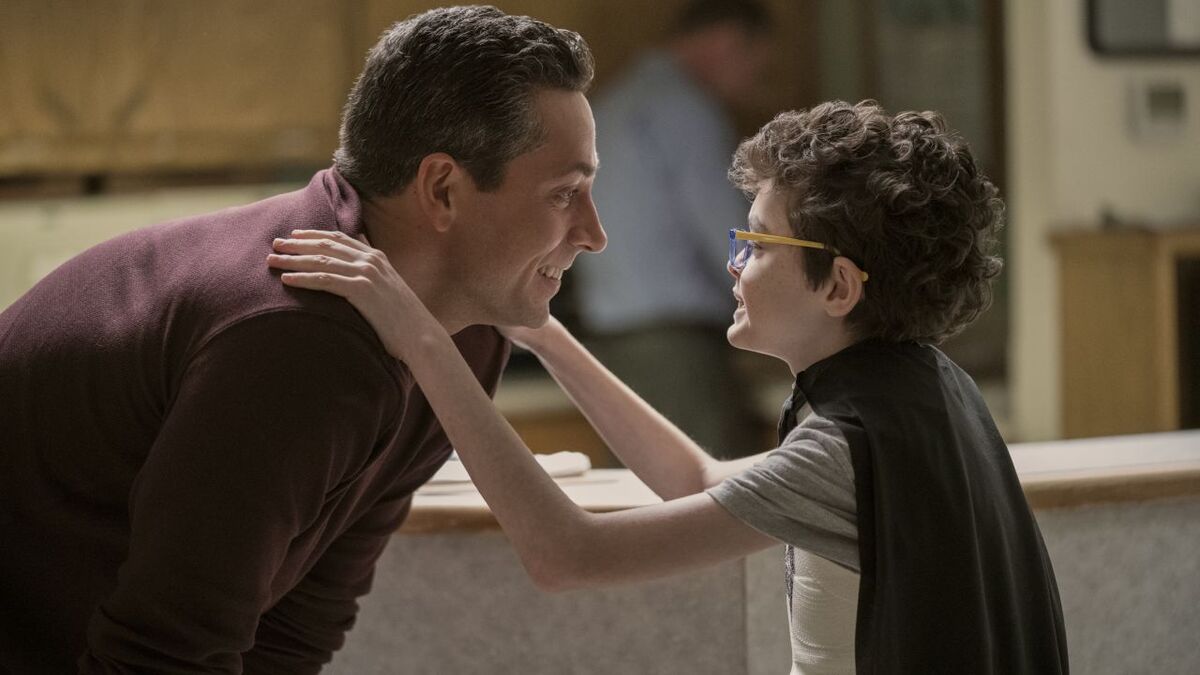
Six episodes were provided for review purposes prior to broadcast.
Just when you thought it was time to go back in the water, have a picnic, or just generally interact with the outside world without fear of falling behind on TV, Netflix has once again ensured that at least 13 hours of your summer will be spent indoors. Orange is the New Black Season 3 drops in its entirety on June 12, and makes a compelling case for bathing in the glow of a computer screen instead of sunlight. Through the first six hours of the new season, Orange is the New Black remains Netflix’s best original series by a good stretch, and fans shouldn’t fear their favorite show having lost its mojo in the 51 weeks since they tore through the last batch.
For others, though, myself included, that dependability is becoming not an outright problem for the series, but at least a sign of the bloom coming off the rose. The success story of OITNB’s first season was born out of impossible to replicate circumstances. Back in 2013, it was to the show’s immense benefit that it, and Netflix’s original programming brand were nowhere on the map. When it premiered, the disruptive breadth, casting, and story focus of Jenji Kohan’s prison drama was unlike anything on television. Thanks to a wide cast of breakout characters that could tell different stories about race, gender, sexuality and class in ways both studied and hilarious, Orange is the New Black earned a following and accolades that few shows achieve in a freshman year.
Rather than becoming a victim of its own success in Season 2, the show played to strengths by filling out the edges of Litchfield Correctional. It was a move that was bound to pay off because Orange is the New Black is a show about characters, first and foremost. What little evidence remained in Season 2 to suggest that this was just the story of Taylor Schilling’s Piper Chapman has completely disappeared in Season 3, giving the show a cast, not a star to orient itself around. Where the second season upset the broth was by adding an outright villain in Vee, a character dramatically brought to life by Lorraine Toussaint, but that played against the usual low stakes and convivial atmosphere of the series.
The key to what Orange is the New Black does so well, and why it’s one of the only shows to make use of both Netflix’s release model and hour-pushing episode lengths, is its willingness to take its time. Things happen every episode, but this isn’t a show that relies on plot to explore its themes or ask questions about how we relate to other people. Rather, it drops you into the same space with all these weird, damaged but wonderful people, and asks, “Wanna hang out?” The answer is almost always a resounding “Yes,” because getting to know Taystee, Nichols, Morello, Gloria, and more than a dozen other characters I can name off the top of my head is funny and insightful. Where other shows try to stuff you with as many twists and turns as an hour can allow, Orange is the New Black is fine toilet hooch that’s best enjoyed for its relaxed pace and unique blend of flavors.
Season 3 gets back to these simple pleasures in the absence of a singular antagonistic force. Vee may be gone, but life behind bars goes on. There’s a whole host of new problems that those running and rundown by Litchfield are dealing with this year, but they’re carefully woven into the novelistic approach that the show uses for individual character stories. The premiere, “It’s the Great Blumpkin, Charlie Brown,” picks up with the inmates on Mother’s Day, and smartly uses the occasion to let us get reacquainted. From there, the biggest plot point of the season is mostly kept hidden from the larger prison population: Litchfield needs to be bought, or it’s going to be shuttered.
The changes that would come with privatization add interesting new wrinkles to the show’s politically and socially conscious perspective. While this does somewhat enhance the Wire vibes Season 2 tapped into, Season 3 really has more in common with Lost. There’s no smoke monster or polar bear rampaging through the yard (though an important character does mysteriously disappear after episode 2), but the show’s arch sense of storytelling opens many characters up to seeking answers and comfort in a higher power. More often than religion or God, it’s maternal forces that are binding all these people together, as childhood and adulthood reflect back on one another in surprising and long-lasting ways.
Season 3’s biggest hindrance thus far is that, like Lost, the original structural conceit of the series is starting to feel like a vestigial organ. Four of the six flashbacks from the first half of the season focus on character backstories we haven’t explored yet, but just as these reveals in Season 2 were a step down from what we got in Season 1, Season 3’s make for further diminished returns. The flashbacks initially towed the tricky line of only partially explaining the characters as we knew them in the present. By moving into tertiary cast members with less shades to their personalities, the jumps back in time either too neatly wrap up the character’s life story, or lack impact.
The show is aware of its struggle to keep the flashbacks engaging and original (even going so far as to have Big Boo call out her tragic backstory mid-tragic backstory), as they often bring out the indelicate side of Orange is the New Black. This is still a show that does not set up or execute moments of intense action very well – a flashback in episode 2 requires repeat viewing just to know what the heck just happened. In contrast, the fifth episode, directed by Nicole Holofcener, makes an unobtrusive and inviting centerpiece out of a lengthy scene of inmates writing a test in the cafeteria.
Rushed character beats have a tendency to stand out as well, as dramatic turns will force their way into conversation through contrived means. It’s a quirk that’s a very minor issue in the scheme of things. Despite what the Emmy appeals board might say, Orange is the New Black is a comedy, and prison, like any sitcom, is all about maintaining homeostasis. Characters and their relationships are starting to repeat themselves, and while this makes certain pairings less fresh than they once were, the writing on the show is still sharp as a toothbrush shiv. Phrases like “squacoon” and “sex cow” are among the more memorable phrases one can print, as Kohan continues to be to feminine hygiene wordplay what Armando Iannucci is to political potty-mouth.
Season 3 nicely balances old combos that worked with surprising new ones you wouldn’t expect. As in Season 2, Healy (Michael J. Harney) plays better with others than on his own, as a developing relationship with Red (Kate Mulgrew) brings out the softer side of both. The egalitarian approach to character emphasis means you’re likely to see less of some of your favorites (a dearth of Yoga Jones material is the real crime here), but with a box of toys this big, it’s fun simply watching Kohan and company throw people together in different ways.
The show’s best comic wells are still deep and reliable (Taystee and Poussey holding a funeral for library books is as spectacular as you’d imagine), and its resourcefulness in the face of such a constraining premise is never less than impressive. Given the spring setting, Season 3 makes Red seeding the yard garden an apt metaphor for the show itself. Orange is the New Black is reaping a plentiful bounty from the long-ago decision to invest in a community, not just a single character. It means you know what you’re getting by now, for better or worse. But consistency is the mark of a great show, not a bad one. New friends are all well and good, but it’s the old ones you really connect with. So long as we still like being around these characters, Orange is the New Black will have plenty of stories to tell.










Published: May 31, 2015 10:55 pm